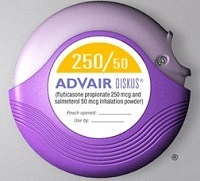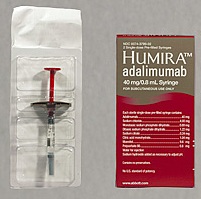In the latest number-crunching on Big Pharma's long-term price increases, Reuters found that stickers on the top 10 best-selling drugs went up by at least 50% over the past 5 years. Drugmakers offered their usual line about list prices as false indicators of real costs, what with discounts and rebates in the mix--mostly without disclosing any numbers.
 But a few did offer figures to back up their claims. And in a couple of cases, the discounts they quoted weren't small change.
But a few did offer figures to back up their claims. And in a couple of cases, the discounts they quoted weren't small change.
For instance, the list price on GlaxoSmithKline's ($GSK) top-selling respiratory med, Advair, swelled by 67% from 2011 to 2015, Reuters' numbers show. After discounts and rebates, the company said, prices actually fell. To anyone who's watched Advair sales plummet over the last few quarters--and followed the heated competition in respiratory meds, including price cuts for formulary placement--that makes sense.
Johnson & Johnson ($JNJ) jacked up list prices on its anti-inflammatory med Remicade by 63% over that period, but the company told Reuters that its average selling price only grew by 5.4% per year. That's still above the inflation rate of about 2% annually--but far less than a cumulative 63%.
Meanwhile, Amgen's ($AMGN) list price on Enbrel more than doubled, Reuters found, but Amgen told the news service that its anti-inflammatory drug--which competes with Remicade in the rheumatoid arthritis market--runs about $200 less than list price, on average. After rebates and discounts, its average price is about $704, rather than its list of $932.
Whether the other drugmakers that made the list offer rebates and discounts on the Advair end of things, or more like Enbrel's, obviously isn't clear. They didn't give Reuters any numbers. A recent Washington Post analysis did find that discounts and rebates went up to about 30% on average--a bit less than Enbrel's--from 20% in 2006.
 According to Reuters' numbers, the biggest cumulative increases over the past 5 years came from the usual suspects identified in recent media reports, including AbbVie's ($ABBV) anti-inflammatory Humira, which went up by 126%, the news service found.
According to Reuters' numbers, the biggest cumulative increases over the past 5 years came from the usual suspects identified in recent media reports, including AbbVie's ($ABBV) anti-inflammatory Humira, which went up by 126%, the news service found.
The roundup of list price increases shows, once again, that the high-profile, egregious hikes from Turing Pharmaceuticals and Valeant Pharmaceuticals ($VRX) are just part of the pricing story--and quantifies how a range of Big Pharma companies use increases to fuel sales even if prescription volumes decline. The increases, even after rebates, have added billions to drug spending over the past 5 years, Reuters says.
Earlier this year, Bloomberg and pricing software provider DRX reported that prices had doubled for 60 drugs since December 2014--and at least quadrupled for 20 more. And last October, a Deutsche Bank analysis highlighted by The Wall Street Journal found companies using hefty price increases--on blockbusters from Biogen's ($BIIB) Avonex to Eli Lilly's ($LLY) Humalog to Pfizer's ($PFE) Lyrica--to keep sales coming.
Novartis ($NVS) and its pricing on the blood cancer drug Gleevec has come in for some recent analysis, too, with the Washington Post tracking not only price increases but rebates over 10 years. List prices went up about 15% a year, the newspaper found, while discounts started at less than 10% in 2006 and ended up declining into the low single digits by last year.
- read the Reuters news
Special Reports: 10 big brands keep pumping out big bucks, with a little help from price hikes | The top 10 most expensive drugs of 2013